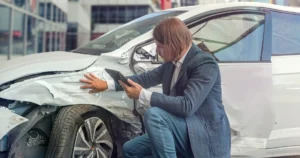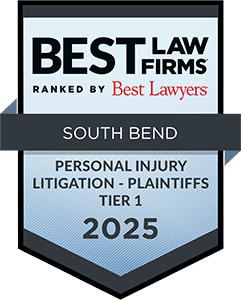 Driving on long stretches of road that all look the same may have some psychological effects on drivers, studies show. One of those effects is going into a state of hypnosis when a driver may not remember stopping at a traffic sign or using a turn signal before changing lanes.
Driving on long stretches of road that all look the same may have some psychological effects on drivers, studies show. One of those effects is going into a state of hypnosis when a driver may not remember stopping at a traffic sign or using a turn signal before changing lanes.
While driving in a mental autopilot state, the risk of causing an accident may be significantly increased. If you were the victim of one of these collisions, you have the right to pursue compensation for your damages.
Call our South Bend-area car accident lawyers today to schedule a free consultation to discuss your legal options. There are no upfront fees for our services.
What Does Driving on Autopilot Mean?
When someone is driving on autopilot, it does not always mean he or she is using automated vehicle technology. In some cases, it means driving without fully focusing one’s mind on the task. Driving on autopilot is also known as “highway hypnosis” or “white line fever.”
This is a mental state in which a driver may travel long distances without any recollection of doing so, safely or otherwise.
Some symptoms of driving on autopilot include the following:
- Traveling several miles with no knowledge of the time that elapsed
- Daydreaming about things not related to driving
- Keeping your gaze fixated on a distant object
- Not remembering whether you stopped at a red light or a stop sign
Sometimes drivers may go in and out of a state of autopilot. This is usually more common when the drive is more than just an hour.
How Does Driving on Autopilot Happen?
According to researchers, people go into autopilot mode when they are doing something that they are intimately familiar with. For example, driving to and from work or dropping the children off at school.
There are two ways drivers may engage in autopilot mode. The first one is that our brains unconsciously know the routes and so we pass visual objects that never make it into the point of awareness. In other words, we see the object, but it never registers in our consciousness. This is also known as inattentional blindness.
Another way people engage in autopilot is if they are aware of the road and obstacles before them and then immediately forget about them once they are no longer in visual range. This could explain why some drivers may stop at a red light or stop sign, but then fail to remember whether they did actually stop.
What are the Dangers of Driving on Autopilot?
Driving in a state of mental autopilot can be dangerous for several reasons.
Loss of Awareness
Driving is a task that requires one’s full attention. This means being aware of your surroundings just as much as it means keeping your eyes focused on the road ahead. Drivers who are unaware may fail to switch lanes when approaching a vehicle on the side of the road.
This could result in a sideswipe collision or even a pedestrian collision if someone was working on the vehicle on the side of the road. In Indiana, drivers are required to switch over a lane for tow trucks, emergency vehicles and police cars.
Additionally, a lack of awareness can mean a driver switches lanes without checking blind spots. This could be especially dangerous to someone on a motorcycle, as these vehicles often do not register in a driver’s mind even when he or she is fully focused on the road. This is because motorcycles are smaller and drivers subconsciously only look out for other vehicles the same size, or larger, than their own.
Reduced Reaction Time
If a driver is on autopilot mode, he or she may not be able to react in time to hazards on the road. This could include other vehicles coming to a sudden stop or objects suddenly appearing on the road.
Drivers on autopilot mode may have their gaze fixated on the road ahead. Generally, drivers may react to something in their peripheral vision, which could help prevent a collision. But if a driver is only focused on the things in their direct line of vision, they may not be able to react quickly enough to a road hazard.
Poor Decision-Making
Even if a driver has decades of experience, he or she may make poor decisions on the road while driving in a state of autopilot. For example, the driver may not realize he or she is in a merge lane that is coming to an end and quickly try to get over without properly checking whether the lane is clear.
What Defense May a Driver in an Autopilot State Use?
One defense the at-fault driver may make to fight back against an insurance claim is that he or she should not be held responsible for any actions taken while in a trance-like state.
However, this defense may not apply in a personal injury case, as it usually only applies in criminal cases when the individual is not fully aware of his or her actions due to some external condition. For example, if someone is sleepwalking, intoxicated or has a medical condition.
It is important to note that if a driver was intoxicated and engaged in autopilot driving, he or she is likely to be held liable for the accident under the legal theory of negligence per se, as drunk driving is illegal.
Call Us Today
If you were injured in an accident, you may be eligible for compensation for your medical bills, lost wages and other damages.
You should strongly consider working with an experienced attorney who may be able to recover maximum compensation.
Our lawyers have decades of experience and we do not charge you any hourly fees for our services.
Call (574) 444-0741 to schedule a free consultation.












